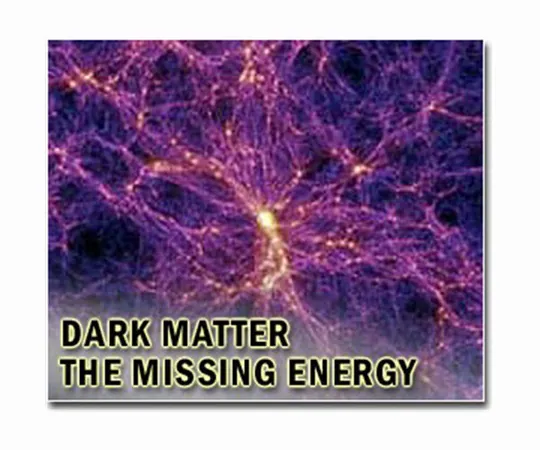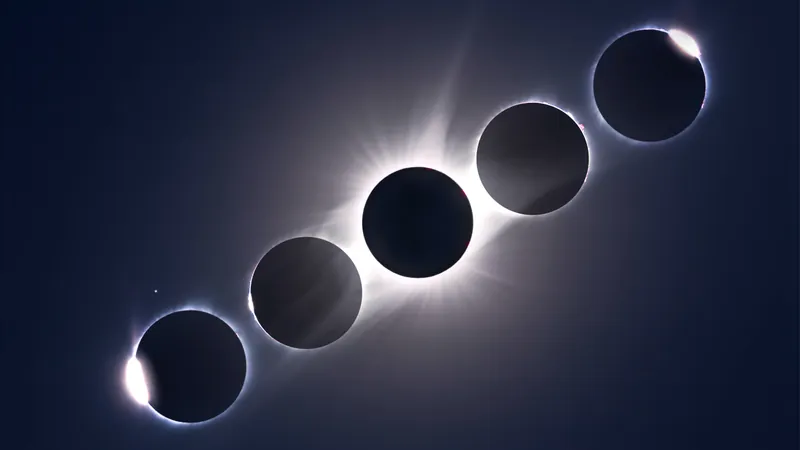
Revolutionary Detectors Unveiled in the Quest for Dark Matter
2025-09-01
Author: Ming
In a groundbreaking development within the realm of astrophysics, a team of international researchers, including scientists from Johns Hopkins University, has launched an innovative detection system nestled deep within the majestic French Alps. This advanced technology aims to unlock the mysteries of dark matter, a substance believed to comprise a staggering 85% of our universe.
For decades, the pursuit of dark matter has yielded little by way of direct evidence, leaving scientists in a state of intrigue and frustration. However, the latest detectors promise to broaden the horizon of exploration, facilitating either a monumental discovery or the dismissal of long-standing, untested hypotheses.
A New Era in Dark Matter Detection
"Dark matter is one of the fundamental elements that shape our universe, yet it remains one of our most perplexing puzzles," stated Danielle Norcini, an assistant professor of physics and astronomy at Johns Hopkins. "Our previous models haven't produced the anticipated results. It's time to elevate our search strategy, and this technology allows us to do just that."
Traditional dark matter detection methods typically focus on heavier atoms like xenon and argon, hunting for the slightest disturbances caused by weakly interacting massive particles (WIMPs). Despite nearly four decades of relentless pursuit, these approaches have fallen short, leading scientists to consider that lighter, less detectable particles may hold the key.
Meet the Silicon Skipper CCDs
Enter the silicon skipper CCDs—a cutting-edge technology capable of detecting single electron signals. This leap in capability means researchers can now target dark matter particles comparable in size to electrons rather than bulkier atomic nuclei, thus aiming to uncover new possibilities termed "WIMPier than WIMPs."
Shielded from Cosmic Interference
To enhance detection accuracy, these sophisticated instruments are installed in the Laboratoire Souterrain de Modane, a facility strategically placed two kilometers underground. This remarkable location—shielded by rock layers—minimizes the influence of cosmic rays and background radiation, creating an ideal environment for detection.
As Norcini aptly put it, "Detecting dark matter is akin to hearing a whisper in a roaring stadium." While the elusive substance has yet to reveal itself, initial results indicate that the detector is functioning correctly, enabling scientists to chart this largely undiscovered territory.
A Vision for the Future
Following the promising proof-of-concept involving eight skipper CCDs, the team is gearing up to scale up their efforts with 208 sensors as part of the DAMIC-M initiative. This ambitious expansion is set to transform the project into the most sensitive tool ever created for identifying this lighter spectrum of dark matter.
As the quest for dark matter intensifies, the scientific community remains hopeful that these innovative detectors will shine a light on one of the universe's greatest enigmas.


 Brasil (PT)
Brasil (PT)
 Canada (EN)
Canada (EN)
 Chile (ES)
Chile (ES)
 Česko (CS)
Česko (CS)
 대한민국 (KO)
대한민국 (KO)
 España (ES)
España (ES)
 France (FR)
France (FR)
 Hong Kong (EN)
Hong Kong (EN)
 Italia (IT)
Italia (IT)
 日本 (JA)
日本 (JA)
 Magyarország (HU)
Magyarország (HU)
 Norge (NO)
Norge (NO)
 Polska (PL)
Polska (PL)
 Schweiz (DE)
Schweiz (DE)
 Singapore (EN)
Singapore (EN)
 Sverige (SV)
Sverige (SV)
 Suomi (FI)
Suomi (FI)
 Türkiye (TR)
Türkiye (TR)
 الإمارات العربية المتحدة (AR)
الإمارات العربية المتحدة (AR)